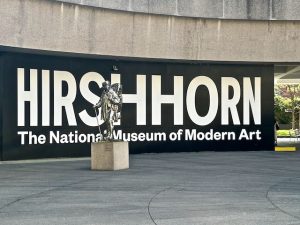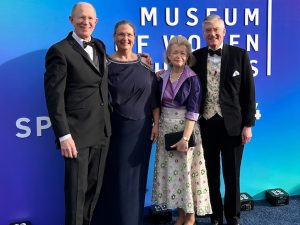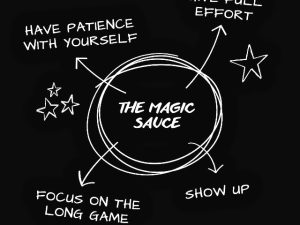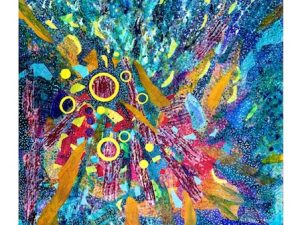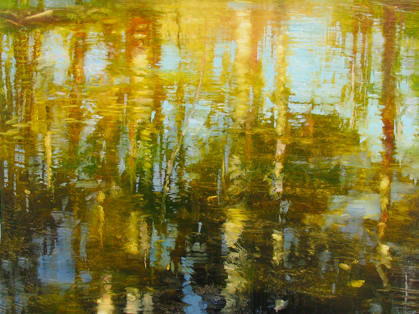
Painting by David Dunlop
I went to a talk by David Dunlop (see here) at a local library on how the eye perceives art. He has an Emmy award winning show on PBS which is in its 13th season. He is also a painter and teacher with DVD’s for sale on his site. (The above is one of his paintings, borrowed from his website… trust me to pick a reflection one!) He is a brilliant man with an awesome vocabulary, having read widely and deeply on the topics of the underlying principles of art as well as the recent developments in neuroscience. He is an enthusiastic and engrossing speaker and we will be hunting down his show and his DVD’s! I recommend him to both artists and homeschoolers. The hour flew by and he had so much more he could have said. This man is practically bursting with interesting information.
He talked about how we usually draw what we think we see. If you asked anyone to draw a car, a duck or a horse, everyone would draw a side view, because we think and have learned nouns as symbols. If we look at it from a different perspective we don’t know where to start in drawing the information so it will still be understood as those nouns. Most people learn to draw like the ancient Egyptians did, by copying other drawings. The drawings done by forerunners become iconic and we resonate with the comfortable familiarity of that. But the map is not the territory. Your point of view matters. Maybe you are looking at that duck head on!
Good art is not just a copy or a manipulation of what is expected. It is not an analytic process, nor just representational information. If we want just information, we would all read our camera manuals cover to cover, which we don’t do. We want to connect with something that has an individual point of view, which gives a physiological effect and elicits an emotional response. We crave authenticity of essence beyond the symbolic mapping because our world is choking with the later where the former is all too ephemeral. We crave the experience of seeing something as someone else viscerally does on the deepest level. It gives us a satisfying feeling of connection, like we are not alone. This has meaning beyond a mere portrayal of information. Good artist’s are not interested in objective reality because fact itself is boring; good artists bring out subjective, personal, emotional, and spiritual reality which is not only valid but is much more likely to be interesting and meaningful.
He discussed how the eye can only focus on one thing at a time; it just focuses fast enough so we think it is all in focus. This, coupled with trained experience in representational symbols, is why some people are fast readers and some slow. The fast reader’s quick focus quickly recognizes symbols, where the slow reader needs to look at more of the letters carefully to have the same effect. It is those quick readers that more often want representational painting because they are so trained to expect and need to understand by the conventional use of symbols. If they can’t “read” the symbols in the piece of art they can’t understand it, and therefore dismiss it by declaring that they either don’t like it or it is not good. It is the slow reader that will understand abstract painting better, because they take the time to see the non-representational information and enjoy synthesizing that. The color in the rose is actually in the eye after all and not on the canvas, and we all will “read” it differently based on what we bring to it.
Perception is all about context. To an ancient Egyptian seeing a large and a small elephant, they will read it as “Mama elephant and baby elephant.” To those steeped in the western tradition, however, we would understand that as “one close up elephant and one in the distance.” Because of this inconsistency, overlapping is a much more reliable way to depict depth of space.
Convention and understanding in art is much more about what we bring to it than it is about the art itself. That’s why when we subdue the palette it gives the impression of dusk or dawn. Or we paint something blurry if we want people to assume movement. To make something look realistic, we paint high contrast up front and lower contrast in the back. Or we know that people notice pattern where there is regularity, and that most people are all too comfortable with regularity. As artists we fool the eye by utilizing or faking educated expectation, or we confound it by doing the opposite.
What we pay attention to is relative difference, since there is no neutral “control group” in the universe from which to make absolute comparisons. We mark and understand and name based on contrast, for if there is no contrast, we will experience no meaning.
You can’t paint what you haven’t seen. As painters we need to try more, do more, and risk more and then we will see more and enjoy more. We project what we see so we must pay attention to what we value.
But we also need to realize that how it is perceived has nothing to do with what we have seen, since the viewer will have different reference points and assumptions. Some people will be willing to remove their shoes and step in yours and others will not be able yet to do this. But when you are authentic and heartfelt in your point of view, unmuddied by convention or symbols, those rare souls that also feel free enough to be authentic and heartfelt will resonate with your work.
